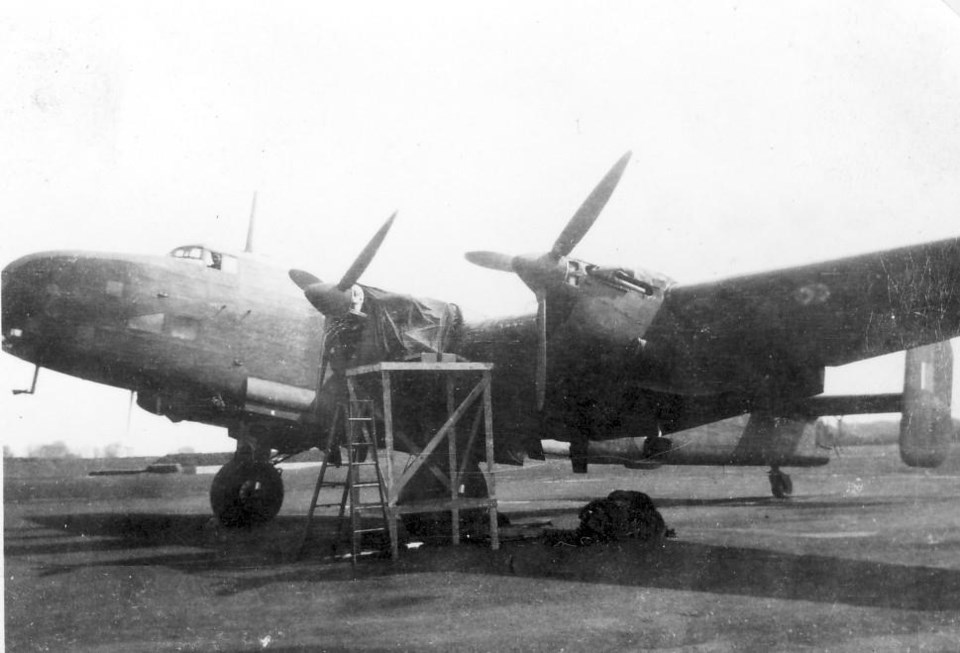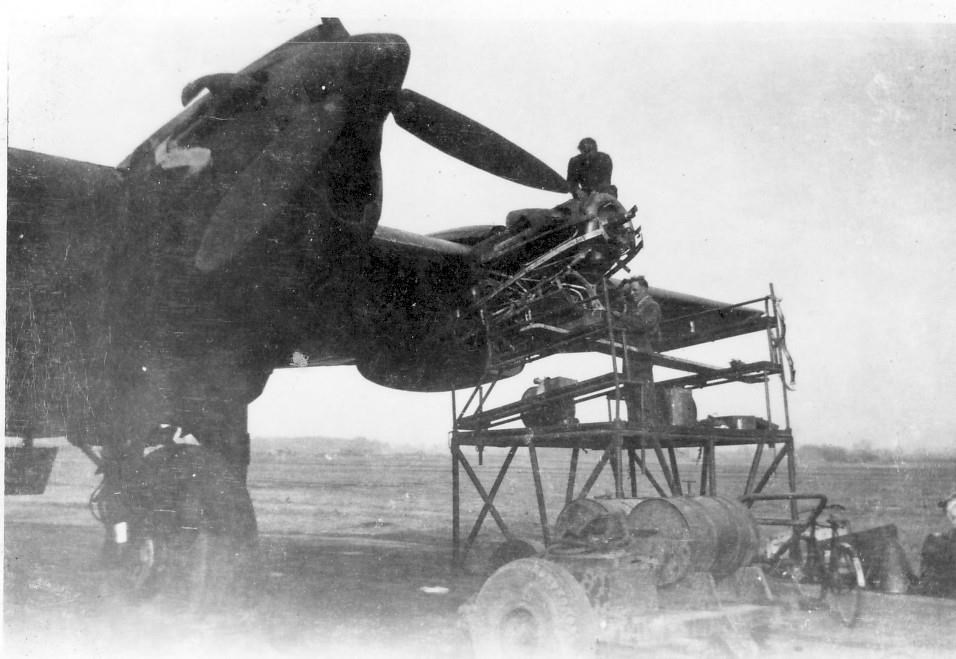On a ‘Bombing Run’ Allied Bombers were stacked at altitude intervals and required to follow a specific bearing so they were not directly over a Bomber at a lower altitude when they released their bombs.
It didn’t always work that way. Imagine being in a Halifax Bomber approaching the bombing target. The pilot, there was only one pilot – no co-pilot on either a Halifax or Lancaster; had to maintain a steady line and height, while Night-Fighters and/or Flak was trying to kill him.
Hard on the nerves.
This is 158 Squadron, RAF Halifax HR837, NP-F. It was hit from a falling 1000-pound bomb, about the size of a small car, while bombing Cologne, Germany on the night of June 28/29, 1943. The wing, not shown, was also damaged.
Pilot, Sergeant D. Cameron, his head sticking from the hole, dropped his bombs and flew back to his Base in Lisset, Yorkshire.

Handley Page Halifax B Mark II, HR837 NP-F was ‘old’ at the time of the incident. It was repaired and flew several more Sorties before going to 1656 Heavy Conversion Unit where it was either used to train new aircrew on heavy bombers, or refurbished with Hercules Radial Engines, updated and returned to service.
Saskatchewan Connection


These two photos are from the Bill Waud Collection. They were taken at 1656 HCU, RAF. They show the engines of a Halifax II being replaced with Hercules radial engines, giving the Halifax greater range and load capacity.
In the bottom photo Bill Waud of Moose Jaw is on the top removing the engine. Andy Anderson of Craik is on the scaffolding.
Bill taught at Peacock School in Moose Jaw for many years.



